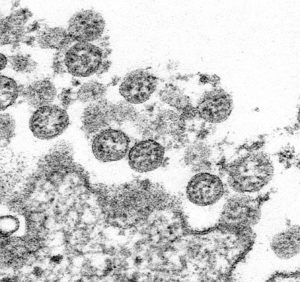
CCC: Average 2020 COVID-19 cleaning charge $46, operation reaches 30%+ of estimates in Q4
By onBusiness Practices | Education | Insurance | Market Trends | Repair Operations
CCC data released last month indicates the collision industry by the end of 2020 was cleaning around a third of customer vehicles as a COVID-19 precaution.
During the first quarter of 2020, only 1.1 percent of appraisals contained a COVID-19 disinfecting charge. By the fourth quarter, this proportion rose to “over 30 percent,” CCC wrote in its 2021 “Crash Course.” It reached about 36 percent in the first quarter of 2021, according to CCC.
The low proportion for January-March 2020 is perhaps to be expected, for the national virus response didn’t really kick in until pretty late in the quarter. Republican President Donald Trump declared a national emergency March 13, 2020. The first statewide lockdown didn’t arise until March 19, 2020, in California, according to the American Journal of Managed Care.
“The average fee from March 2020 to December 2020 fell gradually, averaging $46 per appraisal over that time,” CCC wrote.
CCC searched its appraisal records for manual entries reflecting COVID-19 cleaning, which is a not-included operation.
“Crash Course” author and CCC director and analyst Susanna Gotsch said Friday her research on COVID-19 line items captured both flat standalone charges and instances where a shop billed cleaning time at an hourly rate and/or for materials associated with the work. State Farm, for example, told shops in April 2020 it would reimburse up to an hour of body labor and up to $25 in supplies for coronavirus-related cleaning. (The average body labor rate found in CCC estimates was $52.27 in 2020.)
“For example – on the ~36% of appraisals that included an COVID-19 cleaning fee in Q1 2021, the average COVID cleaning fee was $45 ($19 for labor and $26 for the part/material amount) – and there was on average only 1 line in the appraisal associated with the fees – so the labor and material fees are being entered on the same estimate line,” Gotsch wrote in an email.
Gotsch found a “pretty wide swing” between states on the proportion of estimates containing COVID-19 cleaning fees.
Running the numbers between Jan. 1, 2020, and March 31, 2021, revealed that North Dakota appraisals only described COVID-19 cleaning 8 percent of the time. Meanwhile, New York shops and/or insurers wrote for COVID-19 cleaning on 41 percent of estimates, Gotsch said.
Cleaning appeared on 15 percent of Louisiana appraisals, 22 percent of Florida estimates, and 23 percent of Texas sheets. Over on the West Coast, Washington state and Oregon were in the “mid-30s,” Gotsch said.
It was all “so geographically different,” she said.
On the whole, CCC found “Miscellaneous charges” — a category which contains COVID-19 cleaning and other manual entries for elements like “scan fees, calibration fees, and other sublet fees” — reached 8 percent of repair dollars spent in 2020. In 2013, only 5.7 percent of the repair bill stemmed from miscellaneous line items.
“The virus that causes COVID-19 can land on surfaces,” the Centers for Disease Control wrote April 5 in advice for business cleaning and disinfecting. “It’s possible for people to become infected if they touch those surfaces and then touch their nose, mouth, or eyes. In most situations, the risk of infection from touching a surface is low. The most reliable way to prevent infection from surfaces is to regularly wash hands or use hand sanitizer.”
The CDC also states:
Cleaning with products containing soap or detergent reduces germs on surfaces by removing contaminants and may also weaken or damage some of the virus particles, which decreases risk of infection from surfaces.
When no people with confirmed or suspected COVID-19 are known to have been in a space, cleaning once a day is usually enough to sufficiently remove virus that may be on surfaces and help maintain a healthy facility.
Disinfecting (using U.S. Environmental Protection Agency (EPA)’s List N) kills any remaining germs on surfaces, which further reduces any risk of spreading infection.
You may want to either clean more frequently or choose to disinfect (in addition to cleaning) in shared spaces if certain conditions apply that can increase the risk of infection from touching surfaces:
• High transmission of COVID-19 in your community,
• Low number of people wearing masks,
• Infrequent hand hygiene, or
• The space is occupied by certain populations, such as people at increased risk for severe illness from COVID-19
If there has been a sick person or someone who tested positive for COVID-19 in your facility within the last 24 hours, you should clean AND disinfect the space. (Minor formatting edits. Emphasis CDC’s.)
The CDC advises companies to “Prioritize cleaning high-touch surfaces” and says this should occur “at least once a day.”
The CDC discusses cleaning vehicles somewhat in its Jan. 30 advice for taxi and ride-share operators.
“Avoid contact with surfaces frequently touched by passengers or other drivers, such as door frame/handles, windows, seatbelt buckles, steering wheel, gearshift, signaling levers, and other vehicle parts before cleaning and disinfection,” the CDC writes. The agency instructs them to “At a minimum, clean and disinfect frequently touched surfaces in the vehicle at the beginning and end of each shift, and between transporting passengers who are sick.”
More information:
Centers for Disease Control COVID-19 “Workplaces and Businesses” portal
CDC, April 2, 2021
CDC “Cleaning and Disinfecting Your Facility” webpage
CDC, April 5, 2021
Featured image: Virus particles from the first U.S. case of COVID-19 are seen in this transmission electron microscopic image. (C.S. Goldsmith and A. Tamin/Centers for Disease Control)
